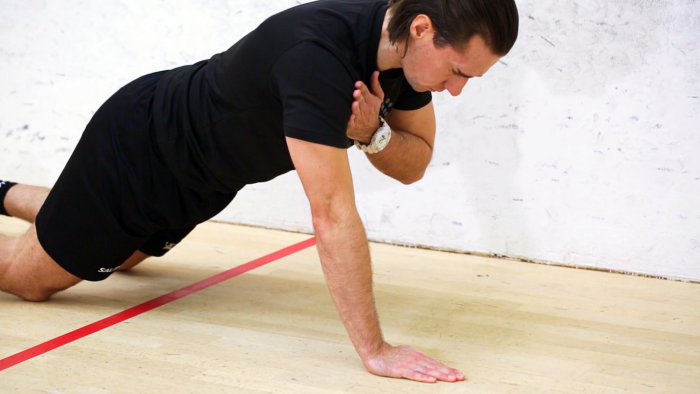‘Core training’ has long been a buzz phrase in fitness circles, with many Personal Trainers and Fitness Instructors the world over taking a limited understanding of the concept and running with it, to the point now that much of the original essence and foundation of core training has been lost along the way and replaced with ever more elaborate so-called ‘functional’ exercises.
Core training done properly however, is a very important consideration for maximising performance and increasing resistance to injury for the sportsperson. Particularly in a sport such as squash, with all the twisting, bending, and lunging going on, a strong core region is a very important piece of the all-round conditioning puzzle.
The lower back is one area in particular where pain and dysfunction is particularly common in squash players (and indeed many adults in all walks of life), but there’s good evidence that these issues can often be resolved/prevented by training and strengthening the core through the use of properly performed stability-based exercises.
Always keep in mind that the ‘core’ isn’t just one specific isolated bodypart. The core is actually composed of a number of different interconnected structures and muscles covering a large area around the middle of the body, primarily the lumbar spine, the muscles of the abdominal wall, the back extensors, and the quadratus lumborum. This network of muscles operates in synergy with the rest of the body, meaning your core is also heavily challenged in most major compound movements that involve multiple muscle groups, such as squats and lunges.

Outside of the sessions we feature here on SquashSkills, it can be difficult to know where to turn for good quality, evidence-based information to promote a deeper understanding of core training.
The name that many experts in the field will often cite however, is Dr Stuart McGill.
Dr. McGill is one of the world’s foremost authorities on the topics of lower back pain, the spine, and core strengthening in general, and he’s authored a huge number of excellent easy to read articles, as well as a whole range of more scholarly works based upon his theories and recommendations.
Both articles linked in the text above are highly recommended for anyone interested in better understanding the nuts and bolts of core training. For those looking for more information on lower back issues, check out McGill’s two books ‘Low Back Disorders: Evidence-Based Prevention and Rehabilitation’ and ‘Ultimate Back Fitness and Performance’ – both are well worth picking up for those seeking further reading. You can also read a very informative interview with him here.
Gary Nisbet
B.Sc.(Hons), CSCS, NSCA-CPT, Dip. FTST
SquashSkills Fitness & Performance Director
Sign up to the SquashSkills newsletter
Get world class coaching tips, straight to your inbox!